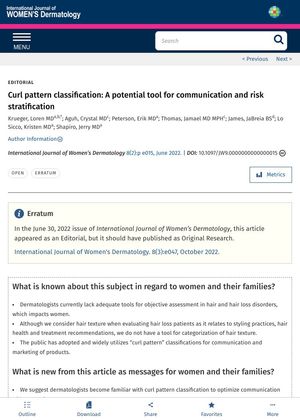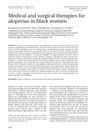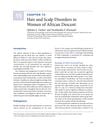Curl Pattern Classification: A Potential Tool for Communication and Risk Stratification
April 2022
in “
International Journal of Women's Dermatology
”

TLDR Classifying curl patterns might help doctors assess and treat hair loss better.
The study "Curl pattern classification: A potential tool for communication and risk stratification" conducted a pilot survey with 74 female participants diagnosed with various types of alopecia. The study found that curl pattern classification, which is already widely used in the public for hair care practices, could be a useful tool for dermatologists in assessing hair loss disorders. The study found that the risk of central centrifugal cicatricial alopecia (CCCA) compared to androgenetic alopecia (AGA) increases with increasing curl pattern. The distributions of alopecia types and curly hair patterns were significantly different between European or Caucasian patients and African or African American patients. The authors suggest that this classification could guide assessment, treatment recommendations, and patient compliance, and hope future studies will move towards its validation. The study acknowledges its limitation of a small sample size and calls for a larger and more ethnically diverse cohort for better understanding.





